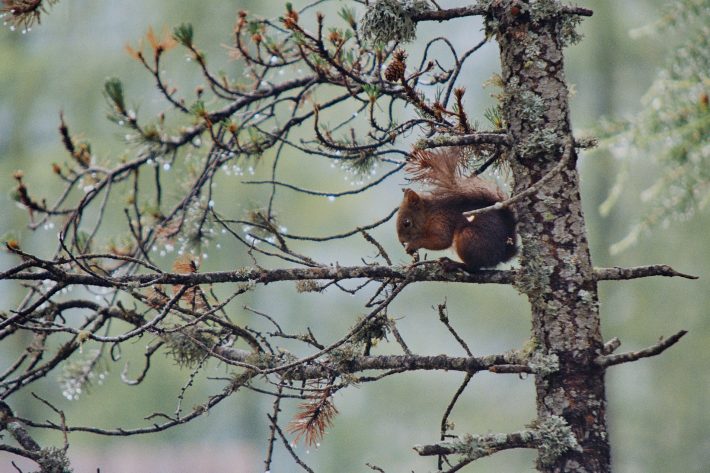The presence of invasive grey squirrels causes increased chronic stress in native red squirrels
University of Insubria press release
A new mechanism reveals how grey squirrels compete with native red squirrels in Great Britain and Italy.

An international team from universities in Italy, Austria and the US used a non-invasive technique to demonstrate that the occurrence of alien grey squirrels increases the concentrations of glucocorticoid metabolites in the faeces of red squirrels living in the same forests.
Mammals produce extra amounts of glucocorticoid hormones when trying to cope with harmful environmental stressors. However, when elevated glucocorticoid concentrations persist over longer periods of time, they often have negative effects on an animal’s fitness. These stress hormones are metabolized in the gut and excreted into the faeces, where they can be quantified as a stress parameter. Their findings are published today in the prestigious Journal of Animal Ecology.
“That our red squirrel is threatened with extinction due to the introduction of an ‘alien’ species, the North American grey squirrel, has become common knowledge”, say Dr. Francesca Santicchia and Prof. Adriano Martinoli of the Guido Tosi Research Group at the University of Insubria in Italy.
“But that one of the mechanisms involved is an increase in levels of physiological stress in individual red squirrels induced by grey squirrels sharing the same woodland is a new finding.”
“For red squirrels, the ‘natural’ situation is being the only diurnal tree-dwelling mammal in our forests and woodlands”, explains Dr. Lucas Wauters, also with the University of Insubria and one of the world’s leading squirrel experts. “But when an alien species, such as the grey squirrel, colonizes these habitats, it acts as a true environmental stressor. A non-invasive way to measure the stress response in wild mammals is to measure the concentrations of glucocorticoid metabolites excreted in faeces. When these are higher than normal levels, they indicate an increase in chronic stress, a situation with potential devastating effects on the animal.”
In this study, which was supported by conservation charity European Squirrel Initiative, the researchers produced compelling evidence that indicate that grey squirrels cause an increase in the levels of physiological stress in the native species. Faecal samples revealed red squirrels had higher concentrations of glucocorticoids in forests inhabited by grey squirrels than in forests without the alien species. In an additional experiment, the ecologists trapped and removed most of the grey squirrels from four woodlands in North Italy and, as a result, reported a reduction in concentrations of faecal glucocorticoids in red squirrels.
“This is a subtle form of interspecific competition, which may exacerbate the effects of other forms of competition, including competition for food, such as conifer seeds, hazelnuts, or chestnuts”, underline Wauters and Martinoli.
In fact, lower food intake and chronically increased concentrations of glucocorticoids both can produce a reduction in body growth and reduce reproduction among the red squirrels that are forced to share their habitat with the invaders. In the end, smaller size, lower fertility, and reduced recruitment of juvenile red squirrels will lead to the extinction of the population in few years’ time.
Read the full article (freely available for a limited time):
Santicchia, F. , Dantzer, B. , van Kesteren, F. , Palme, R. , Martinoli, A. , Ferrari, N. and Wauters Armand, L. (2018), Stress in biological invasions: introduced invasive grey squirrels increase physiological stress in native Eurasian red squirrels. J Anim Ecol. Accepted Author Manuscript. DOI: 10.1111/1365-2656.12853
Media contact:
Lucas Wauters, University of Insubria, Email: lucas.wauters@uninsubria.it
Like what we stand for?
Support our mission and help develop the next generation of ecologists by donating to the British Ecological Society.